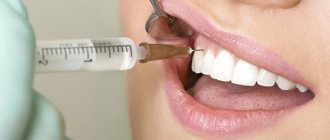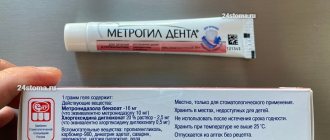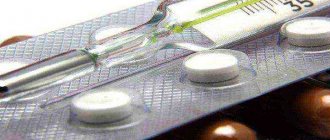Human chewing organs are constantly exposed to adverse factors. Biting nuts and seeds, eating hot foods immediately after cooled ones and vice versa, bad habits, abuse of sour and sweet foods, the destructive work of some microorganisms living in the oral cavity - all this can lead to damage to the enamel that protects the tooth tissue. As a result, dentin becomes defenseless against bacteria that destroy it, and this leads to the appearance of an ever-deepening carious cavity. Unfortunately, this process is irreversible, and, ultimately, the resulting hollow reaches the pulp chamber, in which a focus of inflammation then appears.
The inflammatory process that begins in the dental pulp, as a rule, quickly makes itself felt with sharp pain, worsening at night, and sometimes becoming unbearable at the slightest temperature or mechanical influence.
Of course, the best way to combat dental pulp inflammation is to prevent it. Caries should not be started before pulpitis develops. It is necessary to visit the dentist occasionally for a preventive dental examination. Moreover, sometimes caries itself cannot be detected in a timely manner - often a dental cavity becomes noticeable only when it is no longer possible to install a permanent filling without pulp removal.
Diclofenac for toothache
Unfortunately, people often miss the early stages of tooth decay. Many of them, due to fear of the dentist's office, find many real and far-fetched reasons to postpone going to the dentist, and thereby aggravate their problems. As a result, they have to endure excruciating pain.
The appearance of pain means that you can no longer postpone a visit to the doctor. After all, pain not only turns a person’s life into torment. The development of inflammation can lead to complications from which you can lose not only your tooth, but also your life. However, in case of acute toothache, a person does not always have the opportunity to immediately go to the dentist’s office. And the only way out in such a situation is medication to temporarily relieve pain symptoms.
Most often, non-steroidal anti-inflammatory medications are used for this purpose. They eliminate the symptoms of the inflammatory process, including pain. These drugs include diclofenac, which is widely used in the treatment of certain inflammations. In this case, diclofenac will help for toothache .
How do diclofenac tablets work for toothache?
This drug, which is a derivative of phenylacetic acid, like other non-steroidal drugs used in the case of inflammation, reduces the amount of prostaglandins in the area of the inflammatory process. These substances are directly related to painful sensations, as they transmit appropriate chemical signals to pain receptors. The medicine also limits the migration of white blood cells into the inflammatory area and releases oxygen radicals. As a result, the medicine reduces pain and relieves other symptoms of inflammation, such as swelling and fever.
Due to its pharmacological properties, diclofenac is used against a variety of inflammatory diseases that are accompanied by pain. This medication, for example, is effectively used for radiculitis, arthritis, and bruises.
Diclofenac does not have selectivity, and, once in the body, it acts immediately on all existing foci of inflammation, regardless of where they are located. Thus, this medicine can be used when a tooth hurts, as well as for other diseases of the oral cavity - for example, gingivitis or periodontitis. This medication is also used after oral surgery to prevent complications.
Although the toxicity of diclofenac is low, exceeding the dosage and long-term use can lead to adverse reactions.
The liver decontaminates the drug. The resulting products are removed from the body mainly through urine. A smaller part is excreted into the intestines with bile and removed with feces.
Diclofenac is a strong pain reliever, the effect of which occurs in about half an hour. The medicine can significantly reduce toothache for several hours. Thus, the patient will be able to wait for a trip to the dentist without unnecessary suffering.
Being a strong anti-inflammatory drug, diclofenac, however, in the case of toothache, acts solely as an analgesic, without curing the inflammation itself. Using diclofenac does not eliminate the need to visit the dentist. Those who take painkillers for a long time instead of going to the dentist’s office do not solve their problem and only put their body at risk.
Diclofenac is produced in various forms. These include:
- oral tablets;
- capsules that dissolve in the gastrointestinal tract;
- solutions for injections;
- suppositories inserted into the rectum;
- ointment for external use for bruises and so on.
Tablets are one of the most popular options for the drug - unlike injections, the patient can take the tablets himself, without the help of a doctor, nurse or other person who knows how to give injections.
There are currently two types of diclofenac tablets available:
- ordinary tablets, the amount of the main active ingredient in which is twenty-five milligrams;
- extended-release tablets containing fifty milligrams of the drug.
As the name suggests, tablets of the second type are characterized by a longer period of action. Once in the gastrointestinal tract, the tablet dissolves, after which the drug is absorbed, which further affects the areas of inflammatory processes in the body.
Diclofenac tablets for toothache
It is recommended to take diclofenac tablets a maximum of three times a day. The drug should be taken after eating. Taking the medicine on an empty stomach is not advisable.
You can take not only traditional diclofenac tablets orally, but also the drug in capsule form. The advantage of capsules is the speed of the effect, and the disadvantage is the relatively short duration of action.
Diclofenac solution for injection 25mg/ml 3ml amp 5 pcs Grotex
Pharmacological group:
Non-steroidal anti-inflammatory drug (NSAID).
ATX code: M01AB05. Pharmacodynamics:
Diclofenac has anti-inflammatory, analgesic and antipyretic effects. By indiscriminately inhibiting cyclooxygenase 1 and 2, it disrupts the metabolism of arachidonic acid and reduces the amount of prostaglandins at the site of inflammation. In rheumatic diseases, the anti-inflammatory and analgesic effect of diclofenac helps to significantly reduce the severity of pain, morning stiffness, and swelling of the joints, which improves the functional state of the joint. For injuries, in the postoperative period, diclofenac reduces pain and inflammatory swelling.
Pharmacokinetics:
Suction
After intramuscular administration of diclofenac, its absorption begins immediately.
The maximum plasma concentration (Cmax), the average value of which is about 2.5 μg/ml (8 μmol/l), is reached after approximately 20 minutes. The amount of absorbed active substance is linearly dependent on the dose of the drug.
The area under the concentration-time curve (AUC) after intramuscular administration of diclofenac is approximately 2 times greater than after its oral or rectal administration, since in the latter cases, about half of the amount of diclofenac is metabolized during the “first pass” through the liver.
With subsequent administrations of the drug, the pharmacokinetic parameters do not change.
Provided that the recommended intervals between administrations of the drug are observed, no accumulation is observed.
Distribution
Communication with serum proteins is 99.7%, mainly with albumin (99.4%).
The apparent volume of distribution is 0.12-0.17 l/kg.
Diclofenac penetrates into the synovial fluid, where its maximum concentration is reached 2-4 hours later than in the blood plasma. The apparent half-life (T1/2) from synovial fluid is 3-6 hours. 2 hours after reaching the maximum concentration in the blood plasma, the concentration of diclofenac in the synovial fluid is higher than in the plasma, and its values remain higher over a period of time, up to 12 hours.
Metabolism
The metabolism of diclofenac is carried out partly by glucuronidation of the unchanged molecule, but mainly through single and multiple hydroxylation and methoxylation, which leads to the formation of several phenolic metabolites (3-hydroxy-, 4-hydroxy-, 5-hydroxy-, 4, 5-dihydroxy- and 3-hydroxy-4-methoxydiclofenac), most of which are converted into glucuronide conjugates. Two phenolic metabolites are biologically active, but to a much lesser extent than diclofenac. The CYP2C9 isoenzyme takes part in the metabolism of the drug.
Removal
The total systemic plasma clearance of diclofenac is 263 + 56 ml/min.
The final T1/2 is 1-2 hours. T1/2 of 4 metabolites, including two pharmacologically active ones, is also short-lived and amounts to 1-3 hours. One of the metabolites, 3-hydroxy-4-methoxydiclofenac, has a longer half-life, but this metabolite is completely inactive.
About 60% of the drug dose is excreted through the kidneys in the form of glucuronic conjugates of the unchanged active substance, as well as in the form of metabolites, most of which are also glucuronic conjugates. Less than 1% of diclofenac is excreted unchanged. The remainder of the drug dose is excreted in the form of metabolites in bile.
Pharmacokinetics in selected patient groups
The pharmacokinetic parameters of diclofenac in elderly patients do not change.
In patients with impaired renal function, accumulation of unchanged active substance is not observed if the recommended dosage regimen is observed. When creatinine clearance is less than 10 ml/min, the calculated equilibrium concentrations of diclofenac hydroxymetabolites are approximately 4 times higher than in healthy volunteers, while the metabolites are excreted exclusively in bile.
In patients with chronic hepatitis or compensated liver cirrhosis, the pharmacokinetics of diclofenac are similar to those in patients without liver disease.
Diclofenac passes into breast milk.
Diclofenac injections for toothache and other methods of taking the drug
The advantage of injections of this drug is that this type of drug treatment provides the most rapid relief of painful sensations. Therefore, injections are good when it is necessary to dull acute pain as soon as possible. To achieve the desired effect it usually takes from fifteen minutes to half an hour. Such a quick result is due to the fact that the medicine is directly introduced into the blood, and no time is required for its absorption.
As a rule, diclofenac injections are used during inpatient treatment of a patient - in situations where surgical intervention is required.
The downside of diclofenac injections is that with this use of the drug the analgesic effect quickly wears off. The duration of action of ice is no more than four hours. From this point of view, other forms of medication are more preferable.
Diclofenac suppositories for toothache
This dosage form of this analgesic can be used in cases where the patient for some reason cannot take it orally. Suppositories containing an analgesic and having a conical shape are inserted into the anus. To ensure better absorption of the drug, the patient should spend the next half hour lying down after the procedure. The recommended daily dose is no more than one suppository. The advantage of suppositories is their ease of use and speed of action - the analgesic effect occurs earlier than in the case of tablets.
Pharmacies sell suppositories containing varying amounts of diclofenac. Therefore, it is advisable to coordinate their intake with your doctor, who will determine the most optimal dosage and regimen.
Diclofenac ointment for toothache
This version of the drug is used as an external agent. Ointments are mainly used in case of joint pain, bruises, sprains, etc. In case of toothache, the only way to use gels and ointments is to apply them to the skin of the face in the area where the tooth hurts.
How to use diclofenac for toothache
The dose of this medication is set by the doctor in accordance with the patient’s condition and his individual characteristics. When a tooth hurts, the following options for using the medication are possible:
- Regular oral administration of tablets or capsules.
- Intravenous and intramuscular injections.
- Rectal administration of suppositories.
- External use of ointments in the area of a diseased tooth.
An adult patient can take a maximum of one hundred milligrams of diclofenac at a time. The number of medication doses per day is determined by the form of release and method of administration:
- The maximum permissible daily amount of medication in the form of conventional oral tablets is from seventy-five to one hundred and fifty milligrams. This dose is divided into three or four doses. When the medicine has had the desired effect, the dose is reduced. For patients of childhood and adolescence, the dosage is calculated based on the fact that there should be two milligrams of the drug per 1 kg of weight.
- For injections prescribed for severe toothache and administered intravenously and intramuscularly, the daily dose of diclofenac is seventy-five milligrams. The maximum duration of a course of injection therapy is five days. In the future, injections are replaced with tablets or suppositories.
- External agents are applied two to four times a day. A single amount of ointment or gel should be from two to four grams.
- When using diclofenac suppositories, the dosage regimen is set so that a single amount of the active drug is 50 milligrams. Usually one or two suppositories are prescribed per day.
Place of etoricoxib in the treatment of acute pain. Karateev A.E.
Oksana Mikhailovna Drapkina , professor, doctor of medical sciences:
– We move on to the next section. The next section will be devoted to rheumatology. Our symposium dedicated to rheumatology will be opened by Professor Andrey Evgenievich Karateev. Acute pain. Today we will talk about this. Things are improving all the time, and Etoricoxib appears. What is this? Like this? Tell me, please.
Andrey Evgenievich Karateev , professor, doctor of medical sciences:
- With great pleasure. For you, Oksana Mikhailovna, I will tell you with great pleasure. When a new medicine appears, we first look at what we need it for. For me, a new medicine is a tool that allows you to influence an old problem in a new way. And, of course, pain treatment is a problem that worries probably all specialists, because when we see a patient in front of us, we, first of all, try to make him feel good. We are trying to make sure his suffering ends. And one of the patient’s main complaints, the main complaint is pain. If we look at the statistics, they are inexorable. After all, pain is not just an unpleasant symptom, it is a serious threat to the patient’s life.
Here is a very recent large American study. Femoral neck fracture. A common problem, unfortunately, for elderly patients. And now, despite the well-developed medicine of this country, 10 percent of patients die. 340 thousand break their hips every year, and 10 percent die. 34 thousand patients. Why is this happening? In the first place are cardiovascular complications and pulmonary complications. What are they connected to? Impaired motor activity, use of narcotic opioids that cause respiratory depression, and cardiovascular pathologies. In fact, all these factors are connected by one factor. It is a pain. Movement disorders, cardiovascular risk. Why is this happening? We know this well. Pain, especially chronic pain, and acute pain is a release of catecholamines, an increased risk of thrombosis, depression, and arterial hypertension. And all this is ultimately realized, unfortunately, in an increase in cardiovascular risk, in cardiovascular accidents.
Here, look. A very interesting study and very visual. Chronic back pain. What we used to call osteochondrosis. Lumbodynia. It would seem that this is not a fatal disease. Yes, people suffer. Yes, people suffer. Yes, they are receiving active therapy. But there is no damage to the heart, lungs, or spleen. There is no organ pathology. The patient should not die from this pathology. But the statistics are inexorable. Here's an Australian study. One and a half thousand women, elderly, suffering from back pain. There is no life-threatening pathology, no oncology, no tuberculosis, no fractures. This is functional suffering. Australian scientists observed them for 5 years. It turned out that those women who experienced back pain every day, their risk of death from a cardiovascular accident was 2 times higher than their friends in misfortune, who experienced pain less often, that is, they were better treated for pain. We see that, in fact, there is clear evidence that pain is a problem that we need to be very active in combating. It plays a role not only as a factor that worsens the quality of life of patients, but also as a factor that significantly affects the patient’s survival. This is, in general, a fundamental question today.
There is another aspect to the problem of pain treatment. The fact is that the patient, by and large, does not care what his diagnosis is. He came to us to get help so that his suffering would end. And from the patient’s point of view, if we, and we must think about this today, help him effectively and quickly... And the easiest way to gain the patient’s favor is to relieve his symptoms, to make sure that the patient does not experience suffering. Now, if we do this quickly and efficiently, we are good doctors. If we get carried away with diagnostics, then, unfortunately, from the patient’s point of view, we will not be very good specialists. This is the harsh truth of life, and we must remember this.
But look what happens in real life. This is a very instructive study. The famous American epidemiologist Gore conducted a study. This is the British healthcare system. year 2012. They rate how doctors in the UK prescribe, a very good, clear healthcare system, how they prescribe painkillers. Patients with osteoarthritis and patients with chronic back pain. NSAIDs, Paracetamol, opioids. For us, this seems crazy - strong opioids for osteoarthritis, but nevertheless. In the UK this is possible. Look what happens. During the first month of discontinuation of therapy, if the doctor prescribes a medicine, there is a 90 percent chance that he will cancel it. Because of complications, because of ineffectiveness, because of side effects, he cancels it. Replace the drug with another 50 percent. Therapy is intensified by 10 percent. That is, a month passes, from the patients’ point of view, in two thirds of cases the therapy is ineffective. It's like throwing. The doctor does not know what to prescribe, how to use medications, old, well-known drugs. But there is no single scheme. We must understand another aspect of the problem. After all, pain is a very complex, multifactorial process. Many pathological mechanisms influence the development of this phenomenon. If we see, say, even acute pain, we always understand: there is an element of inflammation. Release of inflammatory mediators, which leads to swelling, damage and activation of nociceptors. This is one moment. There is a biomechanical disorder. After all, of course, a damaged organ cannot work as well as a whole one. This is a big problem. Muscle spasm occurs. Protective muscle spasm. Damage to the ligamentous apparatus occurs. Well, and, of course, the effect on the peripheral and central nervous system. Central sensitization, insufficiency of the antinociceptive system, and finally, a destructive behavioral reaction. All this influences the appearance of this complex phenomenon of chronic or acute pain that is interesting for treatment.
When we talk about the treatment of pain, I have already shown that inflammation occupies a very important place in its pathogenesis. We must always remember this, and therefore it is quite obvious that in the initial treatment of pain we must use those drugs that suppress inflammation, the release of inflammatory mediators, primarily prostaglandins. These are the good old non-steroidal anti-inflammatory drugs. There are a lot of them on our market, 18 pieces. And if you ask the question which of them is the best, I will give you a clear answer: there is no such drug. There can be no perfect remedy. Otherwise we would only use it. That's why we need new tools. And when we get a new drug, Etoricoxib, we think: what’s good about it, how does it differ from the old NSAIDs that we’ve been using for a long time? This is a medicine that belongs to the selective COX-2 inhibitors. That is, it has virtually no effect on the structural enzyme COX-1, and we know that its suppression is responsible for the risk of complications from the gastrointestinal tract. This medicine, which is absorbed very quickly, has linear pharmacodynamics, that is, a clear dependence of the effect on the dose. I'll now show you what it looks like in real life.
Here is a large study that shows how the dose of Etoricoxib affects its clinical effect. Or rather, here the authors of the study went from the opposite. They looked at how often therapy was discontinued due to ineffectiveness when the dose was increased. Look, there is a linear relationship between how a patient discontinues therapy depending on the dose. The higher the dose, the fewer withdrawals. This is the use of Etoricoxib for osteoarthritis. Chronic pain. Look, the small dose of this medicine is 30 mg. It turns out to be as effective as a huge dose of Ibuprofen - 2400 mg. Amazing effect. Well, of course, the effect is much higher than placebo. These are two double-blind controlled studies - more than 1000 patients.
And now we have in our hands a new tool for influencing pain, especially acute pain. This is Etoricoxib 120 mg. Can you imagine if 30 mg is more effective for chronic pain than 2400 mg of Ibuprofen, what 120 mg of Etoricoxib in one tablet can do? A medicine that is given once a day. In fact, this is a very powerful weapon. There is clear evidence that Etoricoxib at this dosage can have a very serious and powerful analgesic effect. This is a very interesting study that demonstrates the potential of a new analgesic. 588 patients who experienced a very unpleasant procedure - the removal of two or more teeth. Dentistry. They receive Etoricoxib at a dose of 90 or 120 mg once. Or, during the first 24 hours after tooth extraction, they receive Ibuprofen, an old, reliable analgesic, 600 mg 4 times a day. Or a medicine that contains a narcotic opioid, Codeine 60 mg. Let me remind you that those medications that we, unfortunately, cannot even prescribe now, such as Nurofen Plus, contained only 8 mg of codeine. There are 60 mg of Codeine and 600 mg of Paracetamol. Also up to 4 times a day. And the patients were observed throughout the day. It turned out that a single dose of 90 or 120 mg of Etoricoxib gives the same effect as a four-time dose of Ibuprofen - 2400 mg per day. And the effect is even better than taking Codeine with Paracetamol four times. This is an amazing effect. Of course, you see that with the placebo it was much worse, much worse. This is a very important thing, and we should always look at the full range of studies in which the drug was studied. The so-called meta-analysis. Clark and his colleagues, not so long ago, 3 years ago, conducted a meta-analysis of the use of Etoricoxib for acute pain. We know that placebos also work for pain. But look, according to these data, an improvement of 50 percent in patients on placebo was observed in only 10 percent, and in 64 percent on Etoricoxib. A very striking effect.
And here is a study by the famous British epidemiologist Murr. This is also a meta-analysis. In total, there are 45 thousand patients, 350 randomized controlled trials, and the NNT index is evaluated. This is how many patients need to be treated to achieve a given effect. They took a 50 percent improvement here as significant pain relief. It turns out that Etoricoxib at a dose of 120 mg is by far the most effective analgesic in comparison with the same Codeine, Ibuprofen, Celecoxib or Diclofenac. This is real life. These are clinical studies that clearly show the merits of a new drug. Of course, we know that NSAIDs, and Oksana Mikhailovna remembers very well; we discussed the topic of complications associated with these medications a lot. We know that NSAIDs are not all roses, but also thorns, these are serious complications. Previously, we talked more about NSAID gastropathy, now we have a time when we talk more about cardiovascular complications, because these complications occur with approximately the same frequency, as we often know. And we must always take them into account. Especially when we are treating elderly patients. A very important point is that if we are talking about the treatment of acute pain, we are still more interested in the problem of gastrointestinal risk, because cardiovascular complications are the prerogative of chronic pain treatment and long-term use of NSAIDs.
And this is what happens. This is a large Finnish population-based study that demonstrates the relationship between the timing of NSAID use and the risk of gastrointestinal bleeding. It turns out that the maximum risk of complications occurs in the first two weeks. In the first days after starting to take NSAIDs. This is when the risk is higher than, say, when the patient takes NSAIDs for six months. A very significant thing that you should always consider in your practice. That is, the first days are the worst in terms of prescribing medication, when we expect a serious side effect, especially if the patient has an increased risk of complications. So, Etoricoxib is a medicine that was specially created as a means to prevent the development of gastrointestinal complications. This is a medicine that has a low gastrointestinal risk. This is confirmed by the entire mass of research that has been actively carried out all over the world to study this issue.
Here, look. Here is data from a meta-analysis of ten randomized trials comparing etoricoxib with traditional NSAIDs. The risk of gastrointestinal complications, dangerous complications, primarily bleeding, is 2 times less. These are not just endoscopic ulcers, but these are serious complications. But, nevertheless, endoscopic ulcers are a very visual thing. We can always clearly assess, using gastroscopy, how NSAIDs affect the development of gastrointestinal pathology.
And now, 2 large studies are being conducted. In total, you see, there are almost 1400 patients here who are receiving the maximum dose of Etoricoxib of 120 mg compared to Ibuprofen or Naproxen - rather mild NSAIDs. What turns out to be? After 12 weeks of taking the maximum dose of Etoricoxib, the incidence of ulcers was 2.4 times lower compared to traditional NSAIDs. This is a very clear, clear effect, demonstrating that the new drug has good gastrointestinal tolerability.
Well, and, of course, the risk of cardiovascular accidents. Today I will not talk for long about the topic of heart complications, especially in the presence of Oksana Mikhailovna. She is a huge expert in this matter compared to me. But, nevertheless, we all understand perfectly well that if we talk about selective COX-2 inhibitors, we first of all think about cardiovascular risk. And, of course, Etoricoxib underwent rigorous testing in terms of such complications. What do short-term studies show, treatment of acute pain? Studies last up to three months. They clearly show that Etoricoxib has no greater risk of cardiovascular events than placebo. You see a meta-analysis of a number of studies. There are a total of 4,500 patients here. But you know, now the world community has a rather strict attitude towards medicines, there is no presumption of innocence, and we always look at a new medicine very carefully, first of all, in terms of what its shortcomings are, and only then we think about its advantages. This, of course, is the call of the times, we must always remember this. And therefore, the safety of drugs is now subject to the most severe assessment. And, of course, when we talk about cardiovascular risk, the short-term studies of Etoricoxib did not satisfy anyone. And to prove that this drug is at least as good in terms of cardiovascular risk as good old Diclofenac, the world's largest study of painkillers was conducted. This is the Medal study. What is its essence? For about three years, an average of one and a half years, 34,700 patients with rheumatoid arthritis and osteoarthritis, that is, diseases characterized by chronic pain, took 60 or 90 mg of Etoricoxib or 150 mg of Diclofenac every day. Moreover, this study simulated real clinical practice. If patients had an increased cardiovascular risk, they should have received Aspirin, in the opinion of the doctor, of course. Although, of course, the doctors did not know what medicine. Double-blind study: neither patients nor doctors knew what was prescribed. But if there was an increased cardiovascular risk, then the doctor could prescribe Aspirin, and if there was an increased gastrointestinal risk, proton pump inhibitors were prescribed as an effective means for preventing complications from the gastrointestinal tract. What happened? For the gastrointestinal tract, as expected, the overall number of complications was lower with Etoricoxib. Although I must note, an interesting fact is that the number of gastrointestinal bleedings was equal when using Etoricoxib and Diclofenac. But this is a fact that still requires some understanding. But overall gastrointestinal tolerability, of course, was significantly better when using Etoricoxib in both dosages. And cancellations due to complicated ulcers occurred less frequently. We are, of course, more concerned about cardiovascular risk. What happened here? But it turned out that the number of myocardial infarctions and ischemic strokes was absolutely equal in patients who received Etoricoxib or who received Diclofenac. A very sad, but very compelling argument in favor of Etoricoxib... How can I put it mildly? Evil tongues say that everything in research can be faked. There is only one thing that cannot be faked – the death of a patient. So, the number of deaths of patients from cardiovascular accidents was absolutely the same on Etoricoxib and on Diclofenac. That is, in all parameters of cardiovascular safety, Etoricoxib was not inferior to a traditional NSAID, a non-selective COX-2 inhibitor.
Thus, today we have in our hands a new effective tool for combating acute and chronic pain. This is Etoricoxib, a highly selective COX-2 inhibitor, an effective analgesic with a powerful anti-inflammatory effect that has a long-lasting effect. We always talk about compliance, about patient adherence to therapy, and a medicine that can give a daily effect with a single use is very cool, this is very good. And this is the medicine that initially has, this is its advantage, its main property, good tolerability from the gastrointestinal tract and a low risk of complications, serious complications.
In conclusion, I want to say that, of course, NSAIDs are not the only light in the window when treating pain. This is only the first step with which we begin treatment. Then we layer it on top, like a baby pyramid, we layer other drugs that give an analgesic effect or potentiate the effect of other analgesics. We are not talking about this today, this is a separate topic, very interesting. But we start with NSAIDs. This is the first step. We always prescribe a medicine taking into account risk factors, and select the ideal drug for a specific patient and for a specific clinical problem. Thank you very much for your attention. If you have any questions, I will be happy to answer.
When should you not use diclofenac for toothache?
Violation of the optimal regimen for taking the drug, exceeding the dose and permissible duration of treatment, and the presence of individual indications can lead to a number of negative effects. These include:
- feeling of general loss of strength;
- hair loss;
- the appearance of swelling;
- cough;
- toxic inflammation of the colon mucosa, which results in stool disorders and flatulence;
- vomit;
- inflammation of the oral mucosa;
- allergic reactions, usually manifested in the form of skin rashes and itching.
In addition, diclofenac can also negatively affect the nervous system, causing headaches, sleep disorders and depression.
The safest form of diclofenac is external agents based on it. Before taking other forms of this medication, you should consult a doctor who, based on your medical history, will make a conclusion about the admissibility or inadmissibility of using diclofenac. The main contraindications to diclofenac are:
- Asthmatic spasms of the bronchi against the background of nasal polyps.
- Kidney and liver pathologies.
- High blood pressure.
- Peptic ulcers of the gastrointestinal tract.
- Colitis.
- Increased potassium content in blood plasma.
Patients suffering from hemorrhoids should not take diclofenac suppositories. In addition, the drug is contraindicated in children under six years of age and women during the third trimester of pregnancy and while breastfeeding.
| Toothache medications | |
| Tablets for toothache Analgin for toothache Ketanov for toothache Nise for toothache Nimesil for toothache Analogues of Nimesil Diclofenac for toothache Took for toothache Ketonal for toothache Nurofen for toothache | Moment for toothache Ibuprofen for toothache Paracetamol for toothache Spazmalgon for toothache Tempalgin for toothache Citramon for toothache Aspirin for toothache Pentalgin for toothache Ketorol for toothache Folk remedies for toothache |







